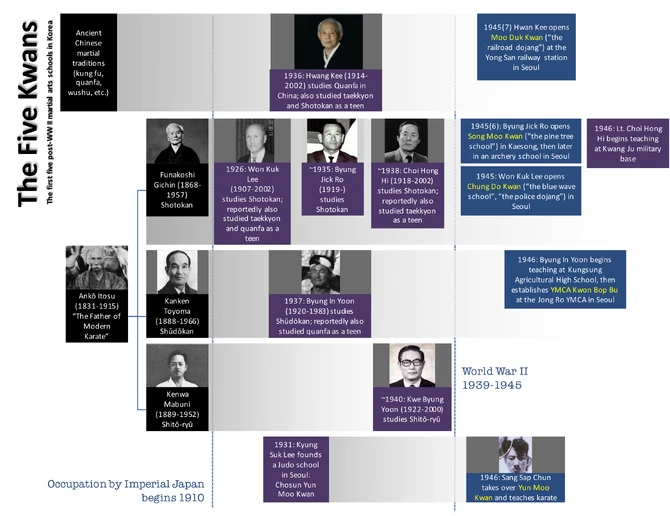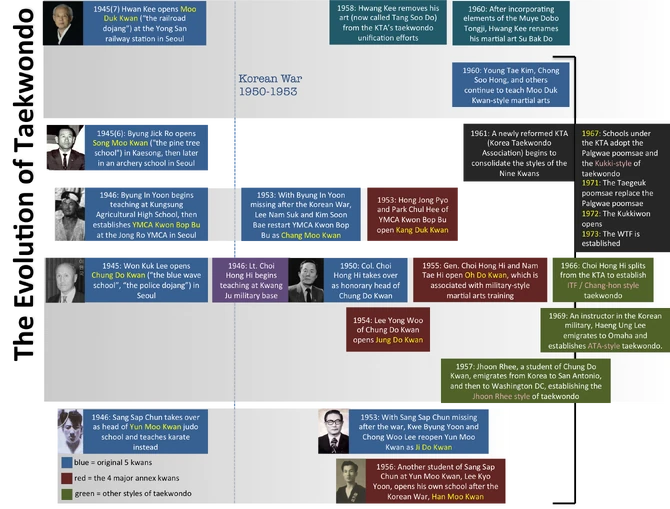My Tae Kwon Do roots are Moo Duk Kwan.
The first pattern I ever learned was Kee Cho Hyung Il Boo - Basic Form 1.
"Moo" means martial, "Duk" means moral/virtuous, and "Kwan" roughly translates to organization.
Moo Duk Kwan was founded by Hwang Kee in Korea in 1945.
Most people who know about Moo Duk Kwan (MDK) associate it with Tang Soo Do, but our school was a Tae Kwon Do / Moo Duk Kwan school.
What follows is a good description of the Kwans.
Respectfully,
Kathy Wiz
====================
From: http://taekwondo.wikia.com/wiki/Nine_Kwans
The phrase The Nine Kwans is used to refer to the nine major martial arts schools to open in Korea following the end of Japanese occupation at the end of World War II: five opening before the Korean War (The Five Kwans) and four major schools opening after the Korean War. Each school practiced its own martial arts style, so sometimes the name of a kwan is also used to refer to the style of martial art practiced by that school. We say "nine schools" but in fact many of these schools later went on to open annex locations that practiced the same styles.
During the 35-year Japanese occupation of Korea (1910-1945), the practice of many Korean folk traditions (including martial arts) was prohibited. During the occupation, Korean men were sometimes conscripted into the Japanese military; there they might learn Karate as part of their military training. In other cases, the men who started the Nine Kwans had previously traveled to China or Japan studying martial arts during their travels. In a few cases, some men had the opportunity to study Taekkyon in secrecy during the occupation.
When the occupation ended, new martial arts schools immediately began to open in Korea, primarily combining elements of Karate, Taekkyon, and Kung Fu. It was not uncommon for these schools to borrow space to operate; for example Moo Duk Kwan would use storage rooms at railroad stations; Chang Moo Kwan originally operated out of a local YMCA.

After the Korean War, students from the original Five Kwans began opening their own schools (these were called "annex kwans"). By 1960, there were 40 kwans in Korea. Shortly after the Korean War, at the urging of the South Korean government, the Korea Taekwondo Association (KTA) was established to consolidate and unify the kwans. By 1974, the KTA had succeeded in consolidating the 40 schools into the 9 schools shown here, the "major" post-war martial arts schools in Korea. By 1978 the KTA had coordinated the Unification Proclamation, in which all 9 remaining kwans agree to abide by Kukkiwon-style taekwondo and rank promotions. Note however that many of the schools split during this period, with some factions still practicing (even today) their original martial arts styles.



No comments:
Post a Comment